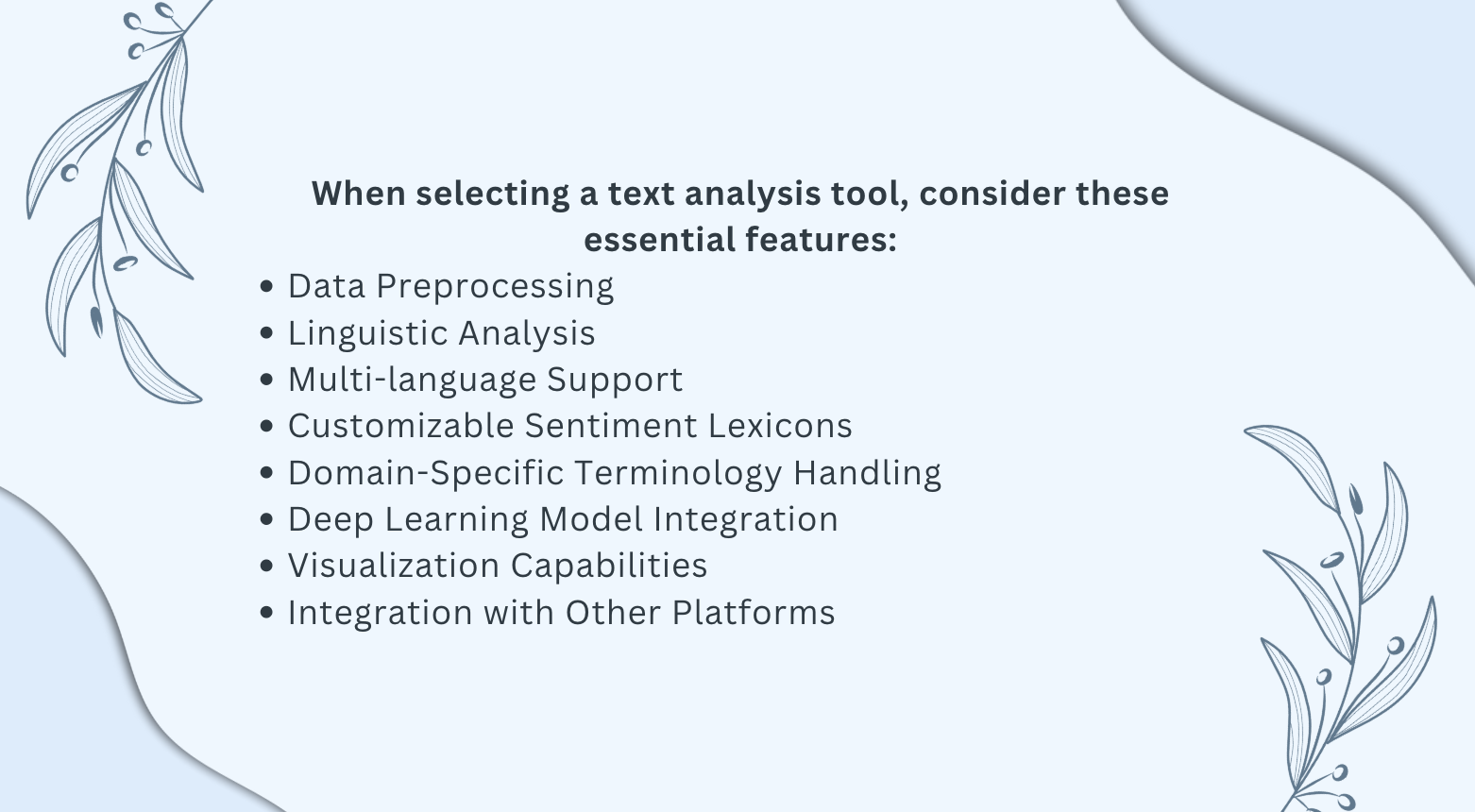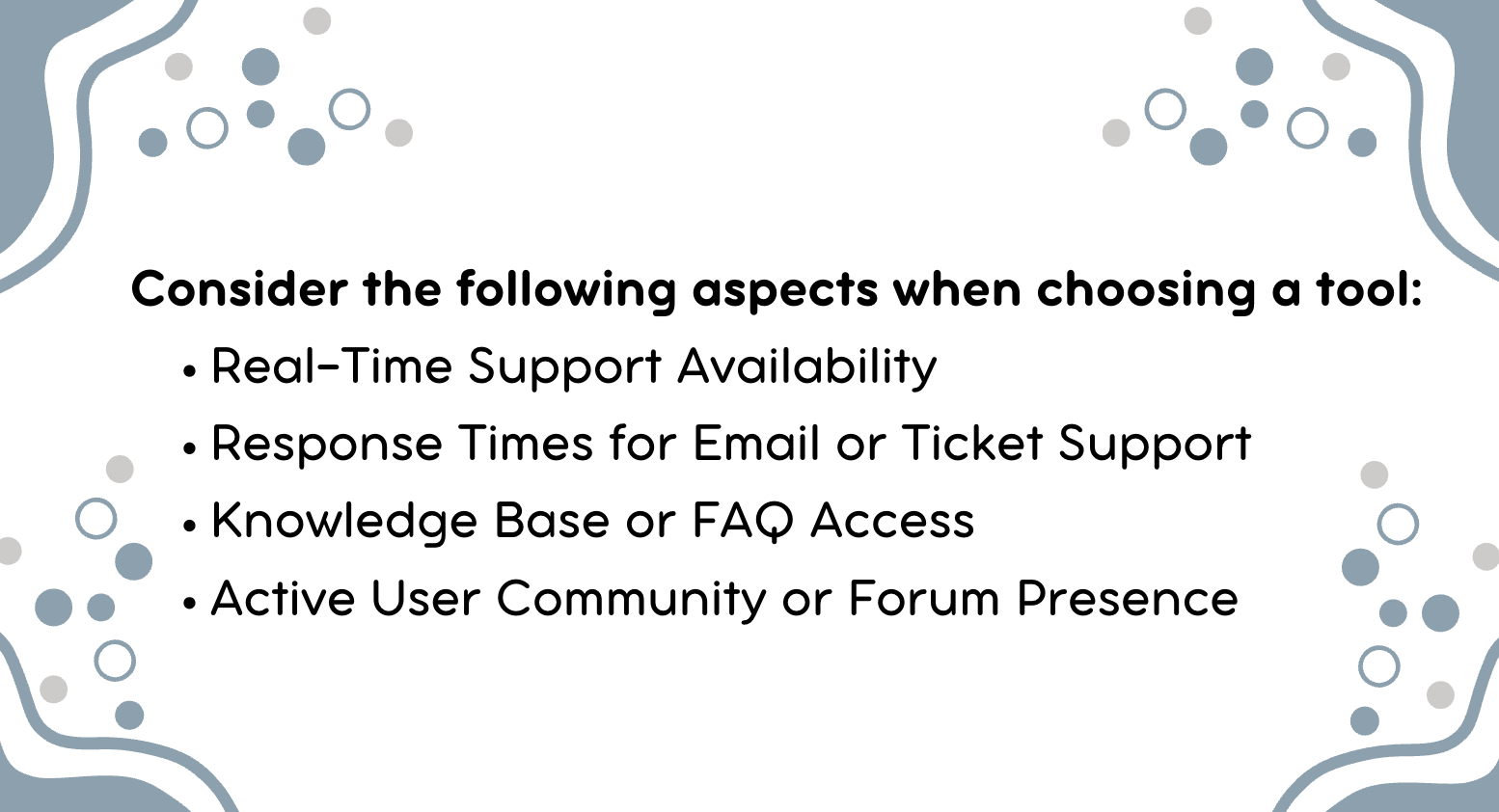
Understanding Text Analysis Tools
Text analysis tools have become indispensable for researchers, businesses, and data analysts seeking to extract meaningful insights from vast amounts of textual data. These tools come in various forms, each designed to tackle specific aspects of text analysis.

Types of text analysis tools include:
Natural Language Processing (NLP) tools: Focus on understanding and interpreting human language
Sentiment analysis tools: Specialize in determining the emotional tone behind text
Content categorization tools: Help organize large volumes of text into predefined categories
When it comes to the underlying technology, text analysis tools generally fall into two main categories:
Rule-based systems: Rely on predefined linguistic rules and dictionaries
Machine learning approaches: Use statistical models trained on large datasets to recognize patterns
Key Features to Look For
When selecting a text analysis tool, consider these essential features:
Robust data preprocessing capabilities (tokenization, stemming, lemmatization)
Comprehensive linguistic analysis features (part-of-speech tagging, named entity recognition, syntactic parsing)
Customizable sentiment lexicons
Ability to handle domain-specific terminology
Integration of deep learning models (e.g., BERT, GPT)
Visualization capabilities (interactive dashboards, knowledge maps)
Integration with other data analysis platforms or workflow tools
Assessing Your Text Analysis Needs
Identifying Your Use Case
Text analysis tools have a wide range of applications across various industries and research fields. To match the right tool with your specific analysis goals, start by clearly defining your objectives. Consider whether you need to classify documents, extract specific information, or track sentiment changes over time. Think about the scale and complexity of your analysis, as well as the type of outputs you require.
Evaluating Data Volume and Complexity
When selecting a text analysis tool, consider the volume and complexity of your data. For large datasets, look for solutions with distributed processing capabilities or cloud-based infrastructure. Consider the tool's scalability as your data volume increases over time.
The complexity of your text data is another critical factor. Unstructured text often demands more sophisticated analysis techniques. Look for tools that offer advanced NLP features such as topic modeling, semantic analysis, or contextual understanding. Consider whether your data includes domain-specific terminology, multiple languages, or non-standard text formats.
Comparing Top Text Analysis Tools
AI-Powered Analysis Platforms
AI-powered text analysis platforms leverage machine learning algorithms and deep neural networks to provide sophisticated analysis capabilities. These tools can understand context and nuance in language, often outperforming rule-based systems in tasks like sentiment analysis and topic classification.
Ponder stands out among AI-powered analysis platforms with its unique approach to knowledge mapping. It transforms complex documents into interactive, visual knowledge structures, allowing researchers and analysts to quickly grasp key concepts, relationships, and hierarchies within large volumes of text.
Traditional Text Mining Software
Traditional text mining software offers reliable and well-established methods for extracting insights from textual data. These tools typically employ rule-based approaches and statistical techniques, making them suitable for users who require transparent and explainable analysis processes.
Aspect | Traditional Text Mining | AI-Powered Platforms |
|---|---|---|
Approach | Rule-based, statistical | Machine learning, neural networks |
Strengths | Transparency, customization | Adaptability, context understanding |
Best for | Standard analysis tasks | Complex, nuanced language analysis |
Data handling | May struggle with large datasets | Efficient with big data |
Integration with existing systems
Integrating a text analysis tool into your existing workflow is critical for its effectiveness and adoption. Consider compatibility with your current data storage systems and look for tools with robust API support. To ensure smooth incorporation into your research processes, follow these steps:
Start with a pilot project
Involve IT and end-users early
Plan for data preprocessing
Consider workflow automation
Provide adequate training
Training and Support Resources
The availability of comprehensive training and support resources is crucial for successful implementation. Look for providers that offer a range of educational resources and robust customer support. Consider the following aspects when choosing a tool:
Availability of real-time support
Response times for email or ticket-based support
Access to a knowledge base or FAQ section
Presence of an active user community or forum
Maximizing ROI from Text Analysis Tools
Measuring Analysis Effectiveness
To ensure your investment delivers value, establish and track key performance indicators (KPIs) aligned with your project goals. Consider both quantitative and qualitative metrics, such as accuracy rates, time saved, and user satisfaction. Implement before-and-after comparisons of workflow efficiency and conduct regular user surveys to gather feedback on the tool's impact.
Scaling Your Text analysis capabilities
As your organization's text analysis needs grow, have a strategy in place for scaling your capabilities. This involves expanding the use of your chosen tool and enhancing the sophistication of your analysis techniques. When planning for long-term growth, consider these strategies:
Invest in ongoing training
Explore cross-functional applications
Leverage cloud resources
Develop custom models
By taking a proactive approach to scaling your text analysis capabilities, you can ensure that your chosen tool continues to deliver value as your organization's needs evolve. Remember that scaling is not just about handling more data, but also about deepening the insights you can extract and broadening the impact across your organization.
In conclusion, choosing the right text analysis tool requires careful consideration of your specific needs, data characteristics, and long-term goals. By following the steps outlined in this guide and thoroughly evaluating your options, you can select a tool that not only meets your current requirements but also supports your future growth and analysis ambitions.

